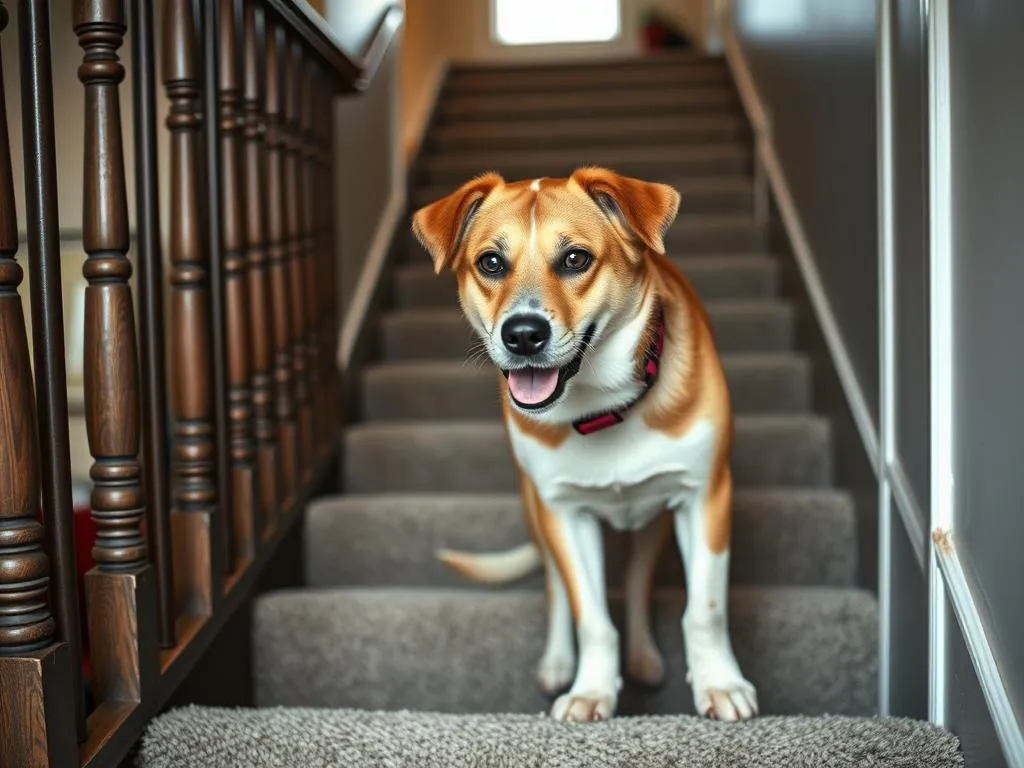
Introduction
Teaching your dog to navigate stairs is an essential skill that promotes their safety and mobility. Many dogs, especially those that are older, have physical limitations, or have had negative experiences with stairs, may hesitate or refuse to go down them. Understanding how to train your dog to go down stairs can not only enhance their confidence but also improve their overall quality of life. In this article, we will explore various techniques and tips to ensure successful training, enabling your furry friend to tackle stairs with ease.
Understanding Your Dog’s Behavior
Why Dogs Fear Stairs
Fear of stairs can stem from instinctual behaviors or learned experiences. For some dogs, stairs may represent an unfamiliar or intimidating terrain. If a dog has had a previous negative encounter on stairs—like slipping or falling—they may develop a lasting aversion. Additionally, some breeds are more sensitive to heights or changes in elevation, making them more prone to anxiety around stairs.
Assessing Your Dog’s Physical Abilities
Before training, it’s crucial to assess your dog’s physical capabilities. Certain breeds, especially those with shorter legs or joint issues, may struggle with stairs. Signs that your dog may have physical limitations include:
- Reluctance to jump or climb
- Difficulty standing up after lying down
- Limping or favoring one leg
- Signs of discomfort or pain when navigating stairs
Recognizing these signs will help you tailor the training process to suit your dog’s needs.
Preparing for Training
Safety First
Creating a safe training environment is paramount. Ensure that the stairs are clear of obstacles and that the surface is non-slip. If your dog is particularly anxious, consider using baby gates or barriers to prevent them from accessing the stairs unsupervised until they are more comfortable.
Gathering Training Supplies
Having the right tools can make a significant difference in the training process. Recommended supplies include:
- Treats: Use small, high-value treats to motivate your dog.
- Leash: A standard leash can help you maintain control during training.
- Clicker: If you use clicker training, have your clicker ready for marking positive behavior.
Additionally, choose a comfortable and familiar space for training—this will help your dog feel secure as they learn to navigate the stairs.
Training Techniques
Step-by-Step Approach
Introduce Your Dog to the Stairs
Start by allowing your dog to explore the stairs at their own pace. Sit at the bottom of the stairs and encourage them to come and sniff the steps. Use a calm voice and let them take their time. This initial introduction helps reduce anxiety and builds their confidence.
Use Positive Reinforcement
As your dog begins to show interest in the stairs, reward them with treats and praise for their progress, no matter how small. If they take a step or even approach the stairs, offer immediate reinforcement to encourage further exploration.
Teach the “Down” Command
Once your dog is comfortable approaching the stairs, it’s time to introduce the “down” command. Use a treat to lure your dog down the first step while saying “down.” When they step down, immediately reward them. Consistency is vital; repeat this process until they associate the command with the action.
Leash Training Method
Using a leash can provide additional control during the training process. Here’s how to implement the leash training method:
- Attach the leash to your dog’s collar and lead them to the top of the stairs.
- Stand close to the first step and gently encourage them to come down.
- Use treats to lure them down, rewarding them as they take each step.
- Be patient and allow your dog to stop if they feel uncomfortable. This method helps you maintain control and gives your dog the reassurance they need.
The Backward Approach
Teaching your dog to go down backward can be an effective method for easing anxiety. Here’s how to implement this technique:
- Position your dog at the top of the stairs, facing forward.
- Stand behind them, gently guiding them back down the stairs while using treats for encouragement.
- Use a calm voice, and encourage them to step back slowly.
- Reward them immediately once they successfully take a step back.
This backward approach can help some dogs feel more secure, as they can maintain a better view of their surroundings.
Troubleshooting Common Issues
Overcoming Fear
If your dog is hesitant or refuses to go down the stairs, it’s essential to encourage them without forcing them. Gradual exposure can help. Spend time near the stairs, play with your dog, and toss treats near the first step to create positive associations. Remember, patience is key—never rush the process.
Dealing with Aggressive Behavior
In some cases, dogs may display aggression or heightened anxiety around stairs. If your dog growls, barks, or shows signs of distress, it’s crucial to avoid forcing interaction. Instead, take a step back and assess the triggers. Consider consulting a professional dog trainer or behaviorist to address these issues effectively.
Reinforcing Training
Consistency is vital in dog training. Regularly practice the commands and techniques learned during training sessions. Incorporate stairs into your daily routine, such as during walks or playtime, to reinforce learned behaviors over time.
Maintenance and Continued Training
Regular Practice
To maintain your dog’s stair navigation skills, incorporate regular practice into your daily routine. This could mean taking your dog out to stairs in parks or practicing in your home. Repetition helps solidify these skills, making your dog more confident over time.
Advanced Techniques
Once your dog has mastered going down stairs, consider teaching them to navigate different types of stairs. For example, outdoor stairs may vary in height and width compared to indoor ones. Introducing them to various stair types can enhance their confidence further. You can also teach tricks related to stair navigation, like running up and down on command.
Conclusion
Training your dog to go down stairs is a rewarding journey that requires patience, understanding, and consistency. By recognizing your dog’s fears and physical abilities, creating a safe training environment, and employing effective training techniques, you can help your furry friend conquer their fear of stairs. Remember, every dog learns at their own pace, so it’s essential to stay encouraging and positive throughout the process. Enjoy the process, as a well-trained dog brings joy and companionship into your life.
FAQs
Why is my dog scared of stairs?
Many dogs fear stairs due to previous negative experiences, instinctual behaviors, or simply because they are unfamiliar with them.
How can I tell if my dog is physically unable to use stairs?
Signs may include reluctance to jump or climb, limping, or showing discomfort while navigating stairs.
Can I train an older dog to go down stairs?
Yes, you can train older dogs. Just be mindful of their physical limitations and proceed at a comfortable pace.
What should I do if my dog continues to refuse to use stairs?
If your dog is consistently reluctant, consider consulting a professional trainer. They can provide tailored strategies to address your dog’s specific fears.
Is using a leash necessary for training?
While not strictly necessary, using a leash can help maintain control and provide reassurance for your dog during training sessions.







